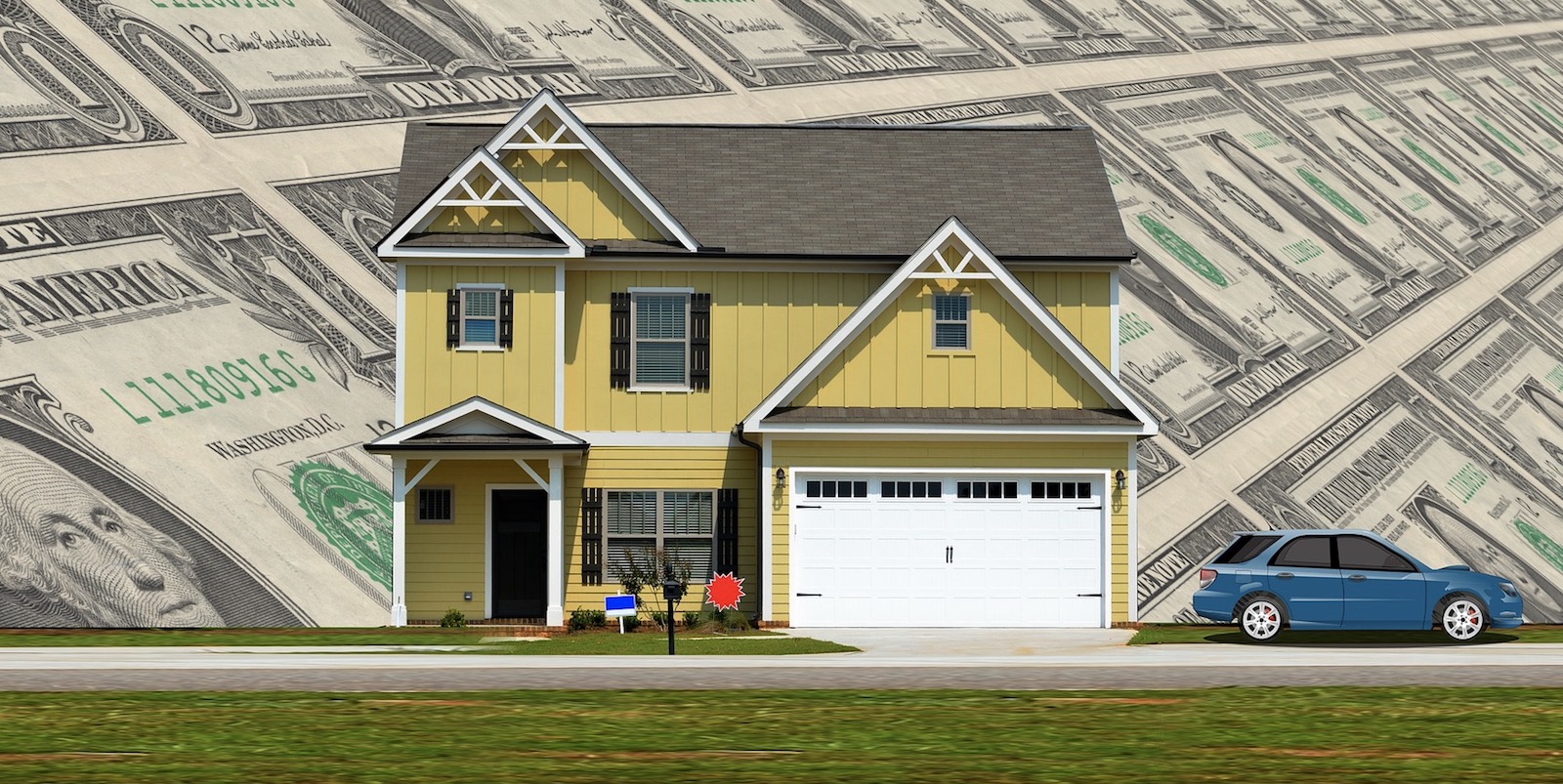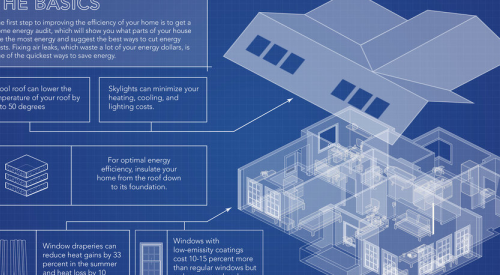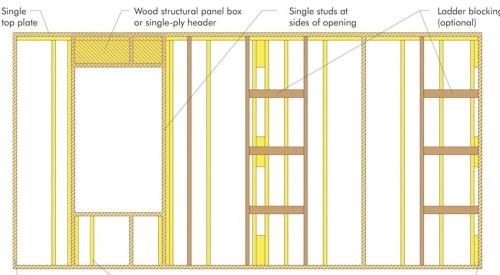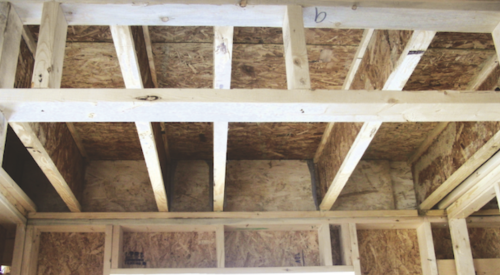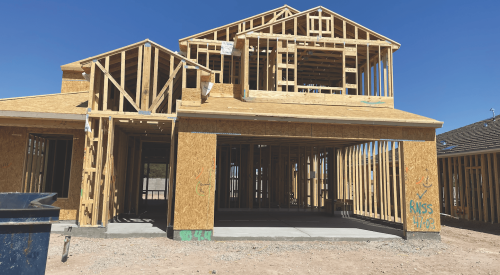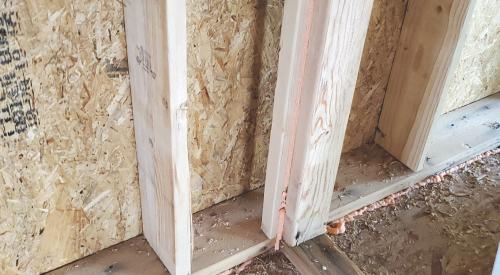Advanced framing techniques enhance the energy efficiency of homes while reducing the cost of construction. Despite this win/win proposition, they have been slow to displace traditional framing practices. As three diverse applications of these techniques show, builders and remodelers of all sizes can select from and apply principles of advanced framing to enhance quality in their projects.
Collectively known as optimum value engineering (OVE), advanced framing techniques help builders reduce the amount of lumber used to build a home while maintaining the structural integrity of the building. These techniques not only lower material and labor costs, they also result in improved thermal performance. They allow insulation to be installed correctly more easily. Also, by reducing extraneous framing, OVE maximizes the cavity space available for insulation. Through-the-wall wood thus is minimized, as is the resulting "thermal bridging" of heat flow directly through the studs.
To demonstrate the diverse environments in which OVE principles can be applied successfully, we look at three applications: the gut rehabilitation of a row house, a new home for a low-income family, and a new, high-end, energy-efficient home.
Optimum Value Engineering and Gut Rehab
This spring, Philadelphia Habitat for Humanity spearheaded the rehabilitation of a 1,200-square-foot row house dating from the early 1900s. Designated as a Partnership for Advancing Technology in Housing demonstration site, the project benefited from PATH technical assistance, including training for a volunteer crew in advanced framing techniques. Thanks to careful planning and the trained, well-supervised crew, the technical advisers felt confident that a fairly comprehensive collection of advanced framing techniques could be employed successfully in the construction. These included 24-inch on-center (OC) framing, a single top plate on nonbearing walls, right-sized headers, no headers in nonbearing partitions, ladders at T-intersections, and open corner framing. Taking a whole-house approach to the rehab effort, the team exploited the framing to increase exterior wall insulation. The home received the U.S. Environmental Protection Agency's Energy Star certificate for superior energy performance.
RELATED
- Advanced Framing Techniques to Help Boost Home Performance
- 5 Proven Ways to Optimize Construction Framing
- Advanced Framing for High Performance and Low Waste
- 12 Lessons From a Production Home Framing Inspector
"We cut our framing costs by 30%," says Steve Jones, director of development for Philadelphia Habitat. "Being a nonprofit, we're always concerned with keeping our costs down, and we found advanced framing to be a great way to do that while maintaining the same quality of workmanship."
The row house is expected to serve as a prototype for Habitat for Humanity affiliates.
High Winds, Low-Income Housing
The Community Development Corp. of Brownsville, Texas, has a specific challenge when it comes to providing decent housing for the residents of its "colonia" settlements of new Mexican immigrants. The nation's poorest community according to the 2000 census, the Cameron Park colonia also must contend with strong Texas winds. The technical advisers to this PATH demonstration site rejected many advanced framing techniques as incompatible with the high wind design loading of the structure.
The new Texas wind code upgraded the "fastest mile" design wind speed for the area from 100 mph to 110 mph, ruling out 24-inch OC studs and single top plates at the exterior walls. A double top plate was required along the exterior wall header, with a hurricane clip on the top and bottom of each stud. The builder carried the double top plate throughout the interior of this 900-square-foot house to simplify the framing process. Also, double king studs were required next to windows, as were four-stud corners, but only single studs were used at interior doors.
The new Texas wind code upgraded the "fastest mile" design wind speed for the area from 100 mph to 110 mph, ruling out 24-inch OC studs and single top plates at the exterior walls.
Although the architect prepared complete wall framing elevation drawings to minimize the number of studs and headers, this framing plan was abandoned as too hard to follow for the framers, who had not been trained to use advanced framing techniques.
In an innovative framing technique, the architect steepened the roof pitch on the short sides of the hipped roof so that half of the roof was framed like a simple gable roof. This gave the house a more imposing appearance without raising the roof line but, more important for the building process, gave the house a 12-foot ridge line rather than 5-foot. This adjustment allowed a more efficient layout of roof sheathing that minimized waste and allowed a modular layout throughout most of the framing, with 24-inch OC rafters and ceiling joists, and 24-inch OC interior studs aligned with the joists.
Lumber-saving ladders at T-intersections were used where interior partitions joined each other and where they joined outside walls. Because of the high wind loading, the exterior wall framing was maintained at 16 inches OC.
These techniques resulted in economical yet structurally sound framing that allowed the builder to produce a well-insulated home that cost only $30,000 to build.
High-End, High-Efficiency Pilot Home
In suburban Washington, the Department of Energy's Building America program sponsored a 5,000-square-foot pilot home as a prototype for energy-efficient, high-quality residences. The Integrated Building and Construction Solutions Consortium provided the designs, which included many energy-efficient innovations. The home was awarded an Energy Star certificate for superior energy performance.
The builder, Washington Homes, builds more than 1,000 homes per year using a high level of mass production. Because the home's structure already had been engineered and approved, any framing techniques that would affect the structural integrity were not considered.
The designer concentrated on the advanced framing techniques that are easier for production framers to adopt and that would not require a structural re-review. Open corner framing and ladders at T-intersections were used wherever possible throughout as a cost-cutting measure and to allow exterior insulation to be installed more effectively.
Even small builders can realize substantial savings by replacing over-framing habits with carefully planned OVE techniques.
"We prefer this installation," says Chip Merlin, Washington Homes' VP of operations in the Virginia region, who notes that these techniques are standard practice in his region. "There was no added cost or incremental installation challenge. It doesn't impact cycle time at all."
After the success of the prototype, Merlin is considering adopting another innovation into his process: applying a thin structural sheathing at all exterior walls that are not drywalled, to maintain air barrier system continuity.
Large production builders such as Washington Homes stand to reap the largest savings from OVE framing as mass production allows the costs of any necessary additional analysis and prototyping, as well as the retraining of framers, to be spread out over more units. But even small builders can realize substantial savings by replacing over-framing habits with carefully planned OVE techniques.
Unlike other innovative building techniques, advanced framing is not an all-or-nothing proposition. Even modest applications can deliver considerable benefits when the framing is exploited to enhance energy efficiency. And delivering a more efficient home for the same cost is an effective way for builders to differentiate themselves on quality.
PATH is a public-private partnership dedicated to increasing the development and adoption of advanced building technologies. Administered by the Department of Housing and Urban Development's Office of Policy Development and Research, PATH works to make U.S. housing more affordable, durable, energy-efficient, disaster-resistant and safe. PATH shares information with the home building industry through its Web sites, pathnet.org and toolbase.org. You also can reach PATH at 800.245.2691.
